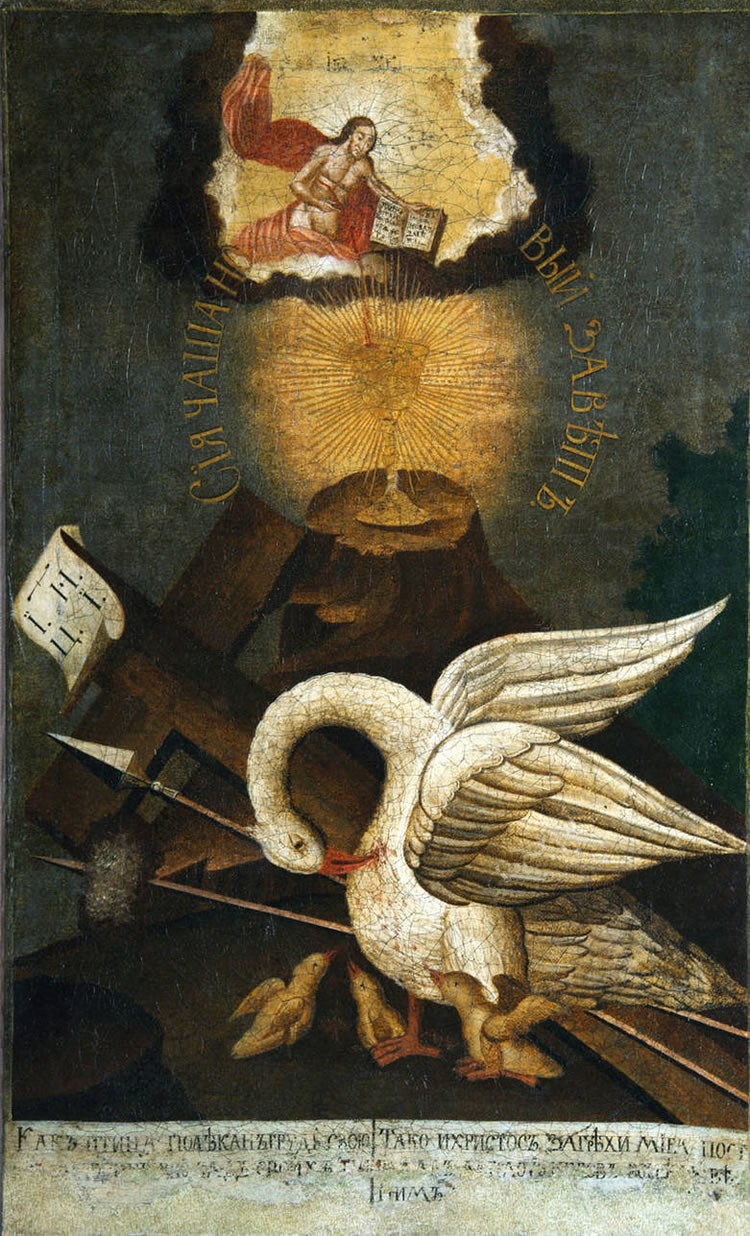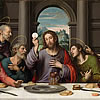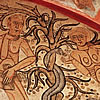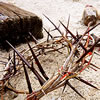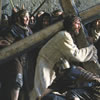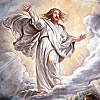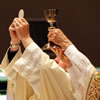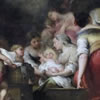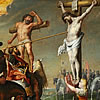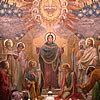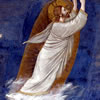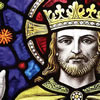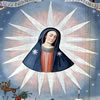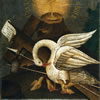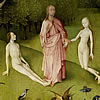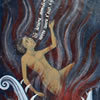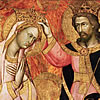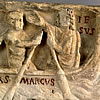Why the Pelican is a symbol of Christ
Quite often, we come across some really strange symbolism in Christian art. One of them is the fish with the Greek letters ΙΧΘΥΣ that transliterates to IXTHUS, which is the Greek acronym for Jesus Christ, God’s Son, Savior. Another is an anchor, which symbolizes hope. Another is a peacock, which is a symbol for Christ because there is a myth that the flesh of peacocks never decays.
Another bird that is used as a symbol for Christ is the Pelican. In older times, the Pelican was believed to have pecked on its own flesh to feed it to its starving chicks so they don’t die of hunger. This became a symbol for Christ because he feeds us with his body and blood in the Eucharist. Most of the time, the Pelican is depicted tearing flesh from its own breast to feed the bloody chunks to its children.
At the top of this Russian painting, we can see Christ pouring the blood that comes from his side onto a chalice on top of a hill that symbolizes Calvary. In the lower part of the painting, we see the instruments of the Passion: the cross, the lance that pierced his side, and a lance with a sponge that was dipped in vinegar and gall. In the foreground, we see a pelican ripping chunks of flesh from itself and feeding it to its chicks. The use or parallelism illustrates that the way the Pelican feeds his own body and blood to his loved ones, is the same way Christ feeds himself to us whom he loves dearly.
The symbolism runs deep because it is deeply rooted in Soteriology – the branch of study that deals with salvation. In this study, humans were never meant to die. However, as an effect of original sin, humans have to die when the soul separates from the body. God told Adam that if he eats the fruit of the forbidden tree, he will “die the death.” In the original Hebrew, the literal translation is, “you will die die.” Since there are no comparatives and superlatives in Hebrew, the way they emphasize degrees of something is by repeating the word. The more it is repeated, the higher the degree. For example, when the angels in heaven worship God with the words, “Holy, holy, holy,” it is a way of saying that there is nothing holier than God. Since God is life, and the source of all life, separation from him means death. So, in the same syntax, when God told Adam he will “die die,” he meant a worse degree of death – not just a separation of body and soul, but the eternal separation of the soul from God.
In this context, when Christ feeds us with his body, he gives us the antidote for the poison (the effects of original sin) that corrpted our nature. Since he is God – life itself – he feeds us with life. For as long as we worthily feed on his flesh, we are eating life. Since we become what we eat, we become life itself so we won’t die the death. This is a simplistic way of understanding this. A deeper way to see this, is if we eat the flesh of Christ, we become Christ himself. No longer are we disfigured by sin but configured to Christ. We are brought back to our original image and that is the image of God. In this image we are recognized by the Father the way he recognizes Christ; and what good Father will not welcome his children with warm hugs and kisses when we come knocking at his door?
If the Eucharist can produce such effects, then it isn’t just a symbol because symbols don’t do that. So if the Eucharist does what we believe we say it does, we should hunger for it. We should go to it in droves and make it the center of our day every day.
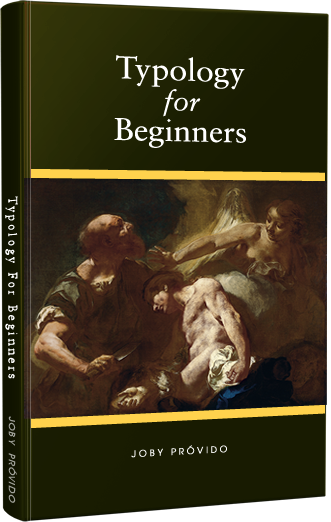
Typology for Beginners
A Catholic Perspective on understanding the New Testament through the Old Testament
First-century Jews converted to Christianity in droves because of the way the New Testament was written to show Jesus was the Messiah promised by the Old Testament. We also learn about how Mary is the New Eve and the Ark of the Covenant in the way the writers portray her.
Through typology, the patterns that connect the Old and New Testaments make the Bible stories more accessible so that one becomes excited to read Sacred Scripture again.
Get your copy now either in Hardbound, Paperback, or Kindle
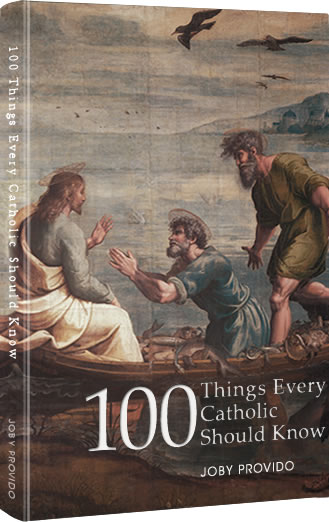
100 Things Every Catholic Should Know
Whether or not you are new to the Catholic Church, or struggling, or lapsed, or dynamically involved, this book will enlighten you with the essentials of the Faith that have been handed down to us by the apostles.
Each of the 100 topics is easy to read and distilled into bite-sized portions. Through cross-referencing, the book also shows how the topics are interrelated. Those who are new to the Faith will find this book an edifying handy reference, and those who have simply forgotten will find it a great review material that might spark a new love for God and religion.
Get your copy now either in Hardbound, Paperback, or Kindle

A Sky Full of Stars
Know Our Lady through her Titles in the Litany
The Church helps us understand who Mary is by honoring her with different titles in the Litany of the Blessed Virgin Mary. Unfortunately, over time and difference of culture, we might not grasp what it is the Church is ascribing to her and lose that opportinity to get to know her.
In A Sky Full of Stars, each title of the Litany is explained so we get know Mary more and fall in love with her all over again.
Get your copy now either in Hardbound, Paperback, or Kindle
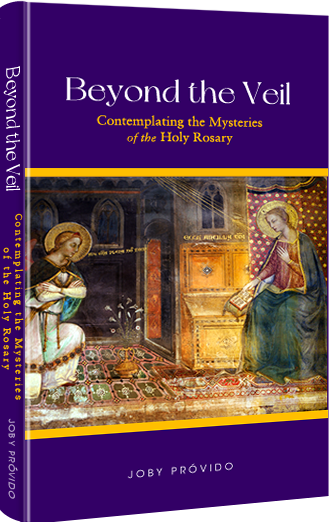
Beyond the Veil
Contemplating the Mysteries of the Holy Rosary
Prayer giants like Pope St. John Paul II, Pope Paul VI, Bl. Archbishop Fulton Sheen, and Bishop Robert Baron advocate that we contemplate on the mysteries of the rosary while we say the vocal prayers. Unfortunately, there are not many books that teach us how to do this. Beyond the Veil comes to the rescue by suggesting seven ways we can pray the rosary the way it was intended.
The larger part of the book offers mental images for each of the mysteries we can use in our contemplation, for how can we imagine the scenes in the rosary if we don't know about them?
Get your copy now either in Hardbound, Paperback, or Kindle


